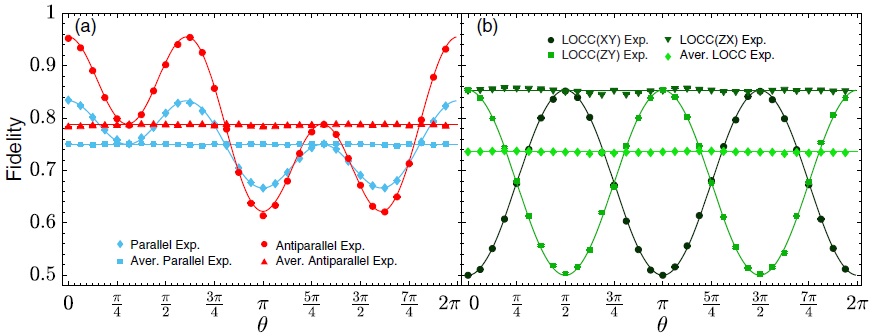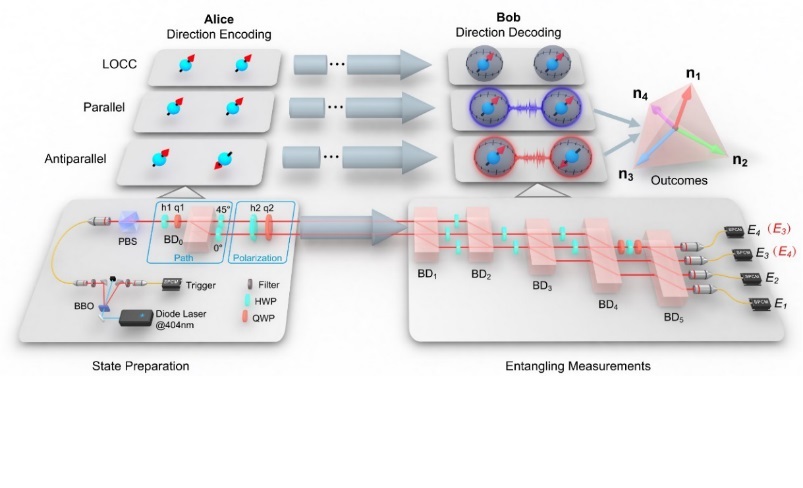2020-02-18
The CAS Key Laboratory of Quantum Information makes a significant progress in quantum orienteering. Under the lead of Prof. GUO Guangcan, LI Chuanfeng, XIANG Guoyong and collaborators enhanced the performance of quantum orienteering with entangling measurements via photonic quantum walks. These results were published online by Physical Review Letters on February 13th.
In a quantum orienteering task, suppose Alice wants to communicate a random space direction to Bob, one possible means is by sending two particles with spins, its spin direction indicating the proposed direction. While no entanglement-which exists both in quantum states and quantum measurements-is between the two spins sent by Alice, it does emerge when Bob tries to encode the information. The difficulty to achieving entangling measurements has led this quantum orienteering scheme yet to be verified by experiments.
In recent years, Prof. XIANG Guoyong et. al. developed a method of realizing quantum entangling measurements via photonic quantum walks, and their method not only has high fidelity but also is deterministic. They have used this technology to achieve unprecedented efficiency in quantum state tomography [Nature Communications 9,1414(2018)], and reduce the back action of quantum measurements in quantum thermodynamics [Science Advances 5,3(2019)].
Recently, Prof. XIANG et. al. used their technique of quantum walk to enhance quantum orienteering. Using photonic systems, they successfully realized such optimal entangling measurement. The experimental results clearly demonstrate that entangling measurements can extract more direction information than local measurements, and the fidelity of antiparallel spins is 3.9% greater than that of parallel spins in orienteering, consistent with the theory proposed by Nicolas Gisin in 1999.

Experimental Fidelities of orienteering based on parallel and antiparallel spins. (a) Quantum entangling measurements. (b) Local measurements. (Image by Key Laboratory of Quantum Information, CAS)
The study demonstrated a truly non-classical phenomenon that is owing to entanglement in quantum measurements instead of quantum states. Meanwhile, it offers an effective recipe to realizing entangling measurements in photonic systems. These results are of interest not only to foundational studies of quantum entanglement and quantum measurements, but also to many applications in quantum information processing.
Ph.D student TANG Junfeng and Dr. HOU Zhibo contributed equally to this work. This work was supported by the National Key Research and Development Program of China, the National Natural Science Foundation of China,Key Research Program of Frontier Sciences, CAS and the Fundamental Research Funds for the Central Universities.
Paper link:
https://journals.aps.org/prl/abstract/10.1103/PhysRevLett.124.060502
(Edited by LI Xiaoxi, JIANG Pengcen, USTC News Center)













